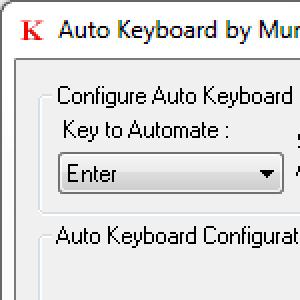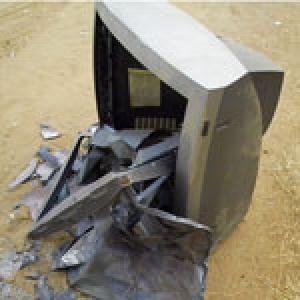Automatic keyboard

Every programmer knows about the intimate relationship between batch-inputs and paperweights, staplers and similar heavy objects. These precious little helpers can keep us from spending up to eight hours hitting the “ENTER” key with one finger.
Although these objects have a certain charm, the law of gravity - the same one that makes them useful - sometimes makes them fall over and stop pushing this key.















